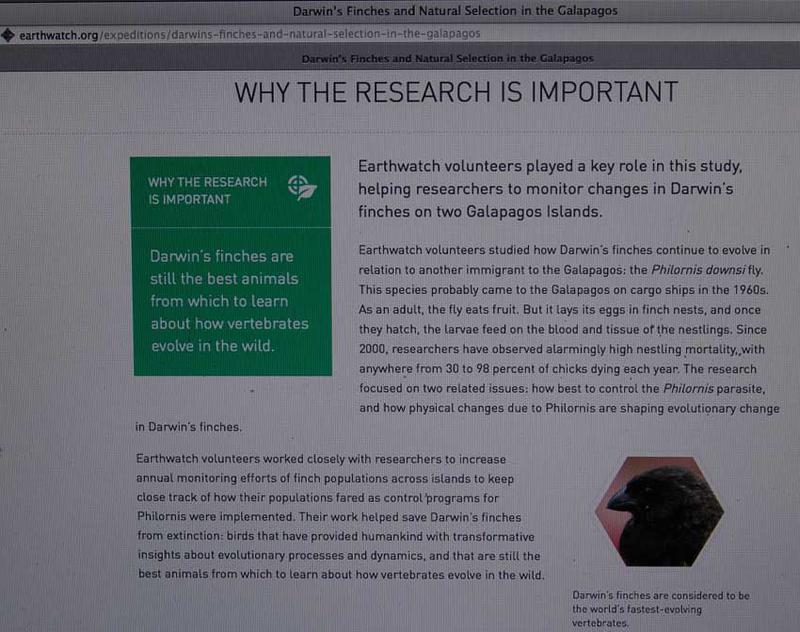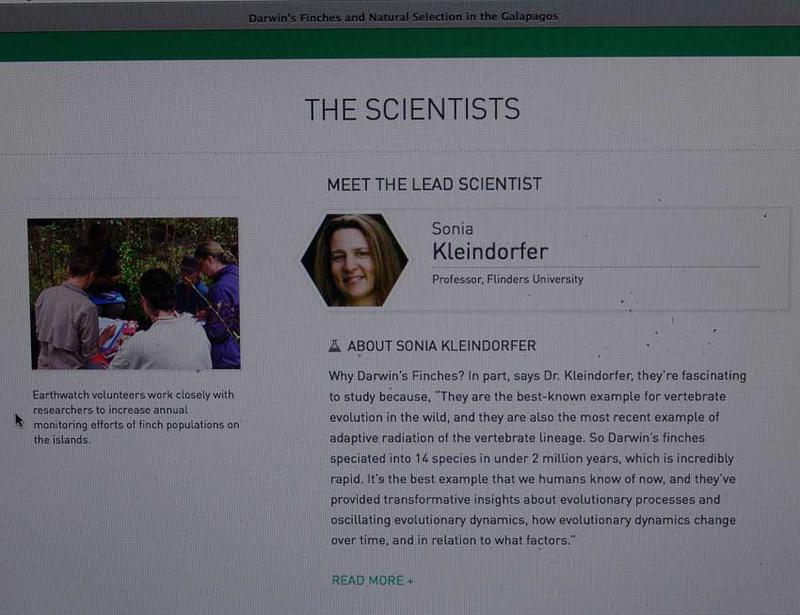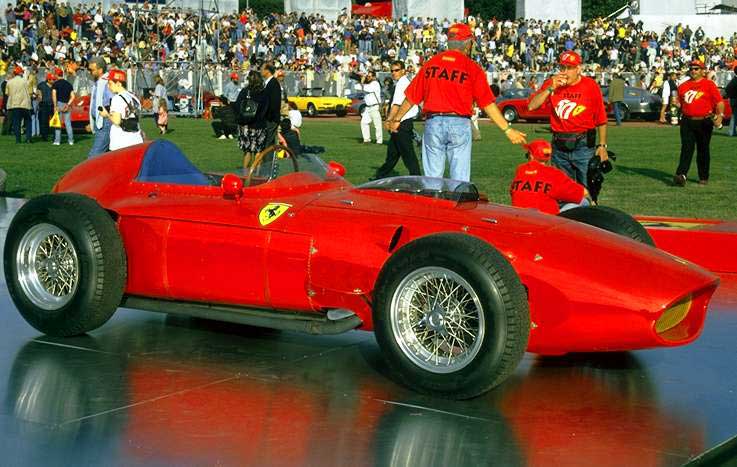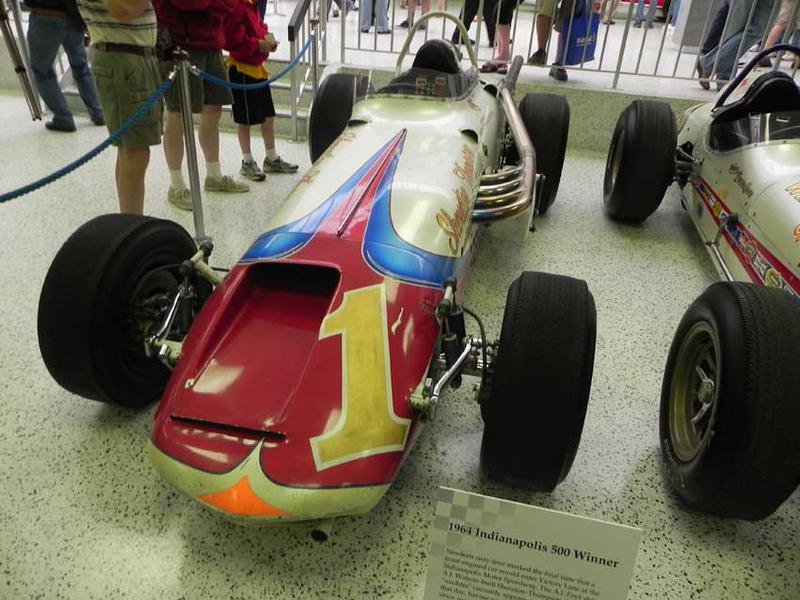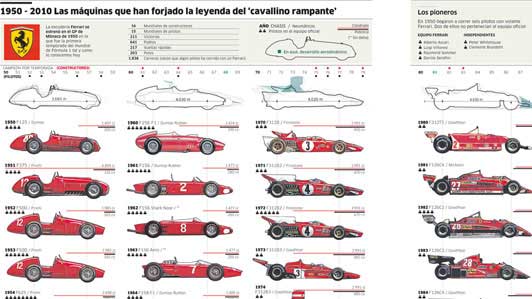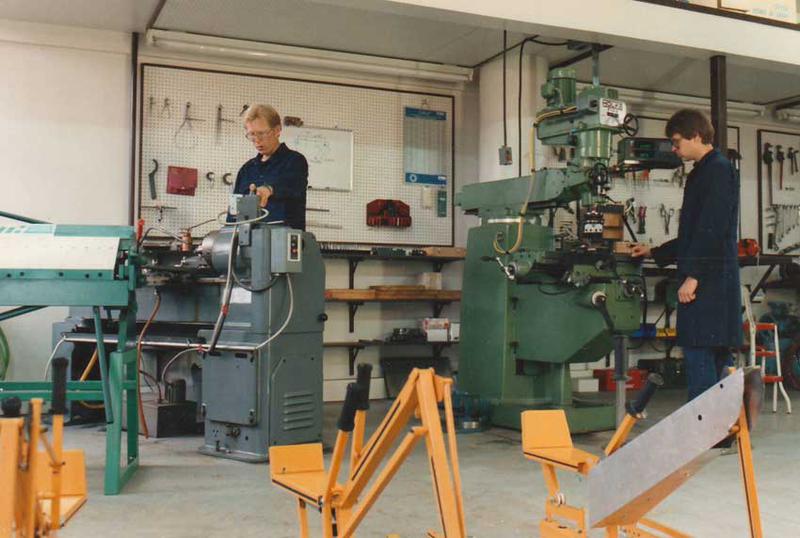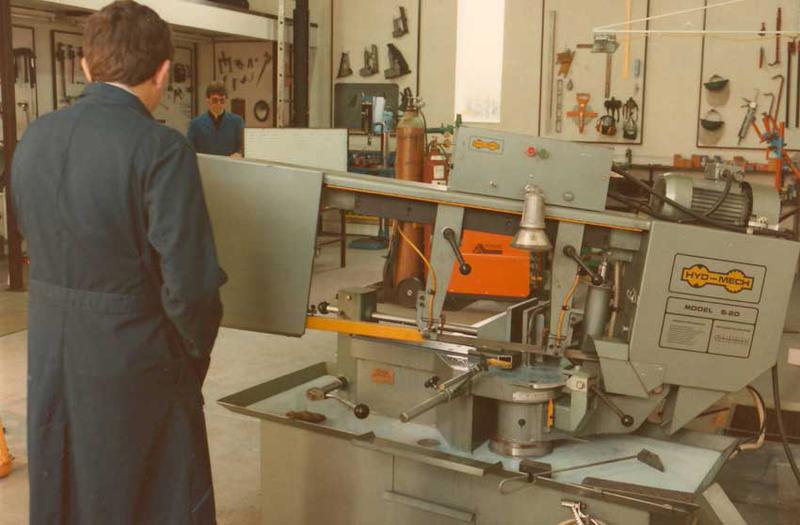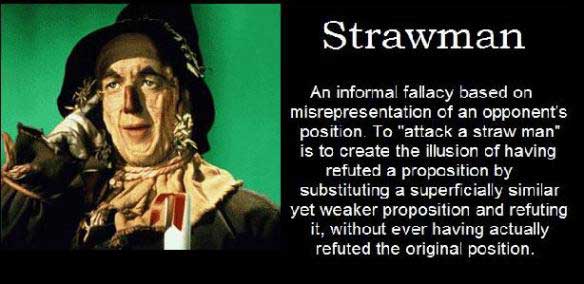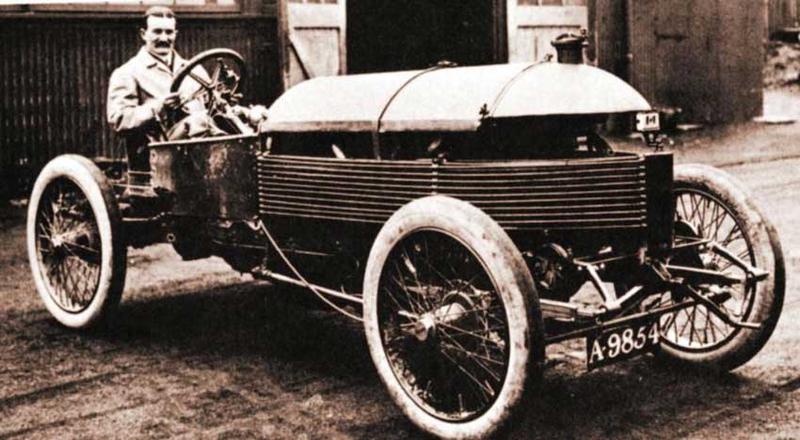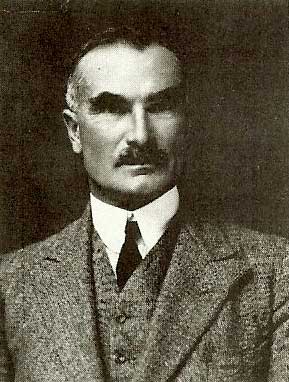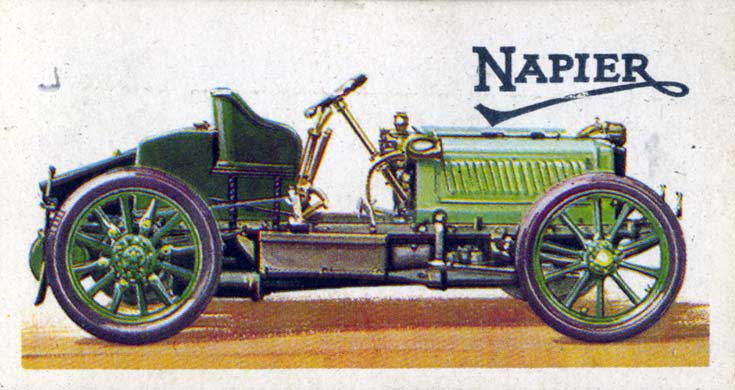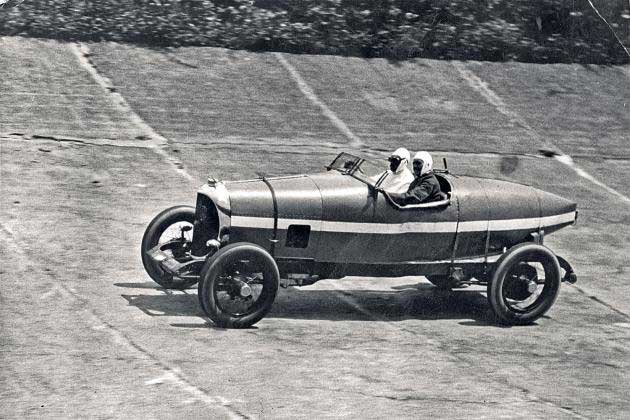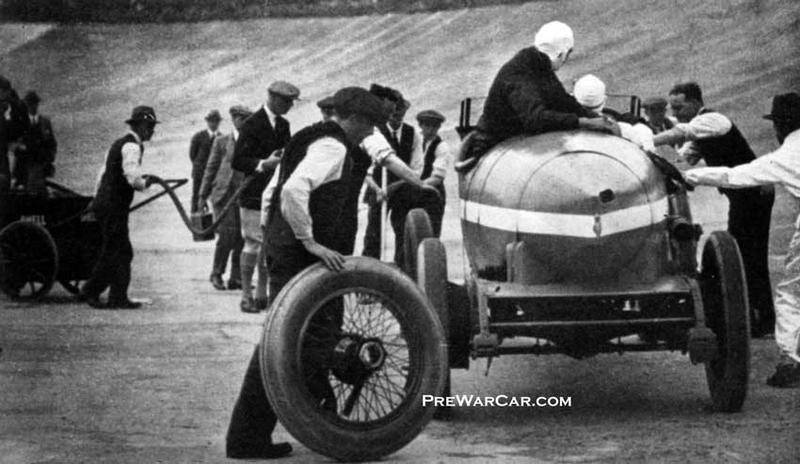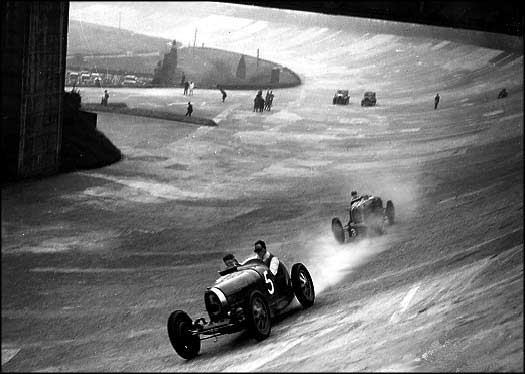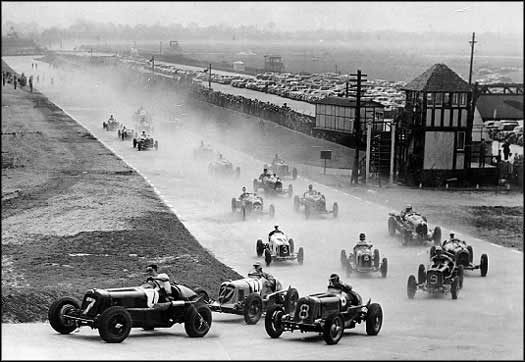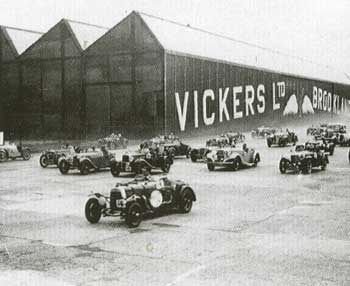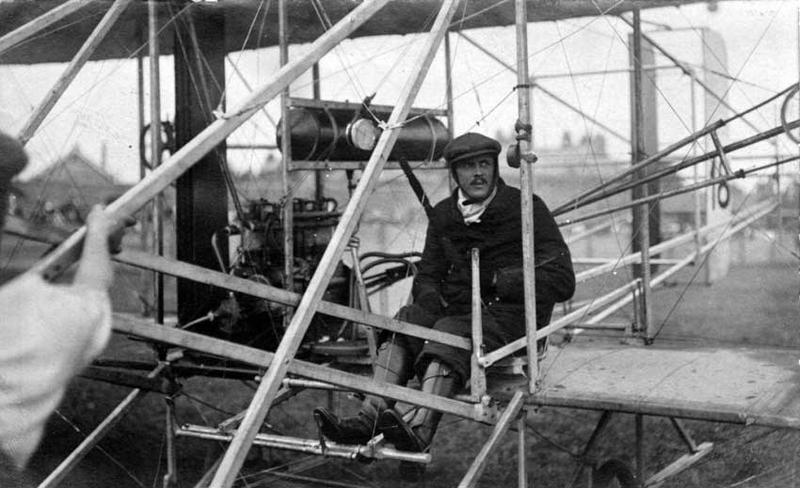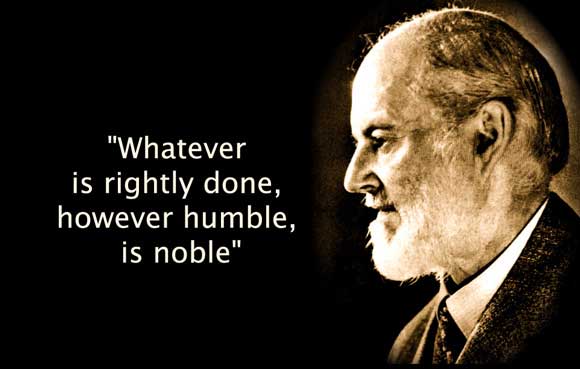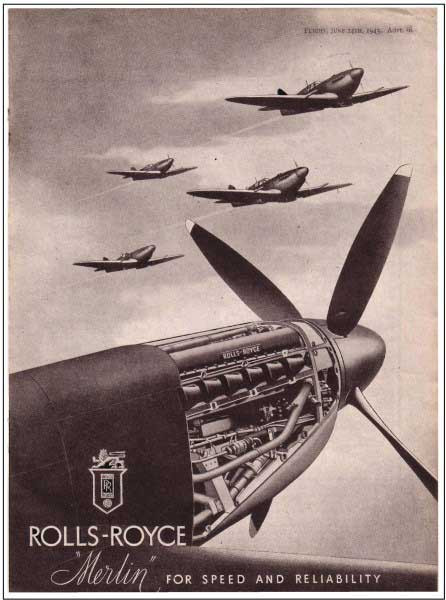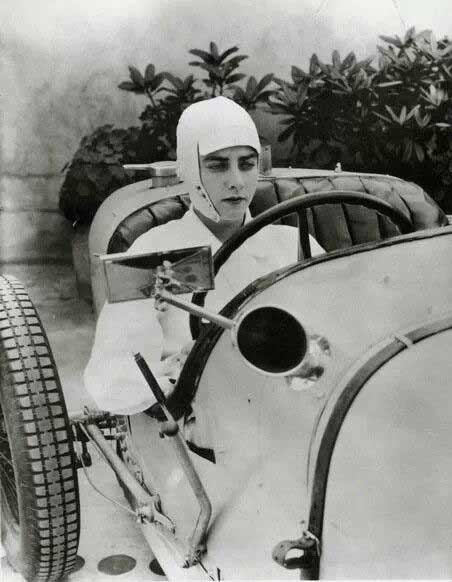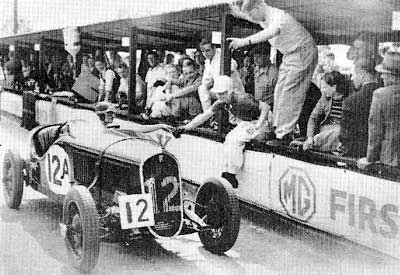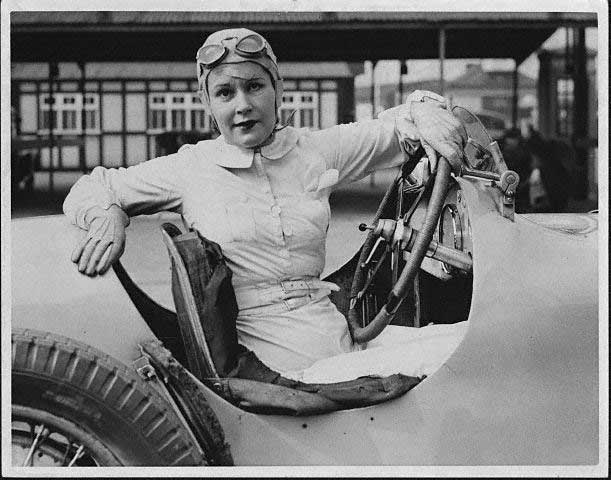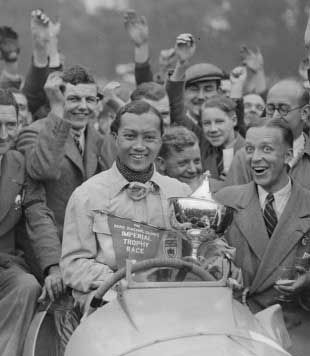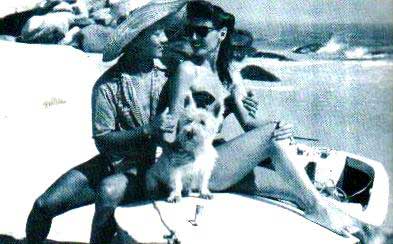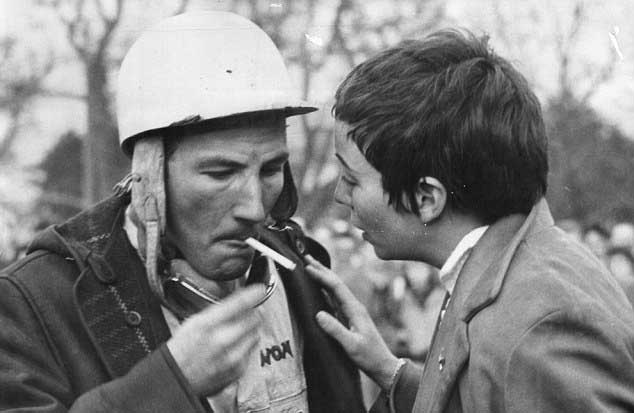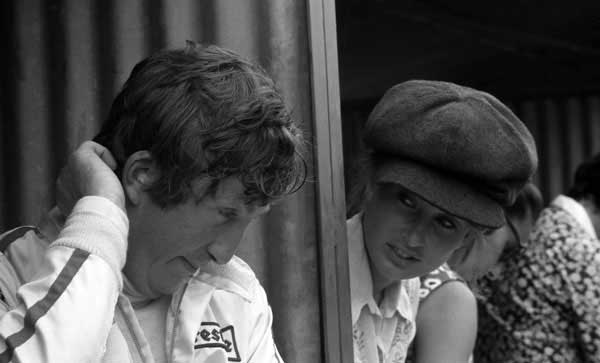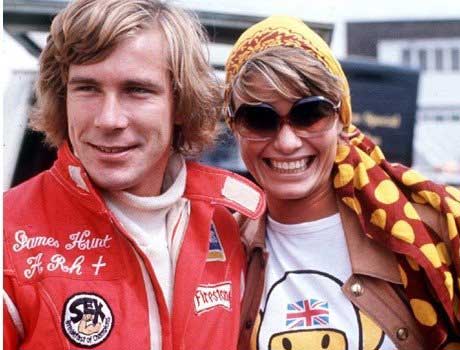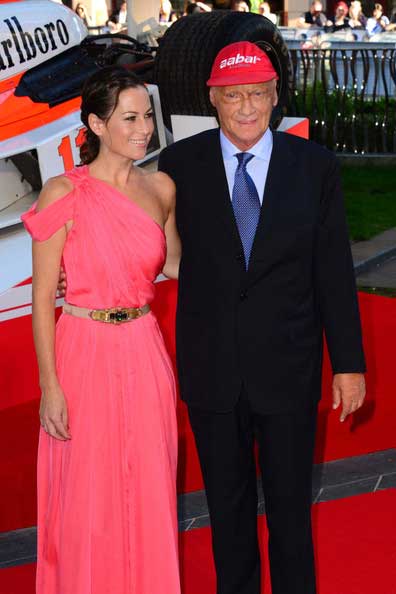Page 7
A short time back, I noticed a BBC news item regarding the possible extinction of the Darwin Finches on the Galapagos Islands. I found it interesting that "science" and human intervention seemed to be required to save the previously adaptable finches.
Read the photos of the Earthwatch website. Notice how the time duration of 2 million years is regarded as incredibly rapid. There seems to be a clash with common sense. For Roger Williamson, life was moment by moment and failure to get him out from under his burning car for several minutes was too long. It would seem that the Earthwatch folks think that Darwin's finches are under pretty tight time pressure as well. For some reason, despite fabulous past performance, evolution** and natural selection** do not seem to be up to the current challenge. Is the scientific method being applied? Why the glitch in "logic"?
I would claim that the world of Formula 1 racing offers a far better illustration of rapid "evolution" and "natural selection" than Darwin's finches.
I star some words because the starred words are an example of using the same word but having a different definition applying depending on where the words are used. A subtle switchup is taking place but there is usually no acknowlegment of the fact! Evolution and natural selection are observable realities but evolution** and natural selection** are flights of fantasy.
I am out to slam a major point that connects to my Big School theme. It is a point that is vital to success in life, yet is passed over by secular and religious people en mass. It is a point that impacts minds in such a way that the eyes connected to the affected minds, can no longer see correctly.
The racing car pictured above is the 1960 Ferrari Dino. You are looking at a car that, as of 1960, was actually already extinct - wiped out by natural selection. Circumstance made the name seemingly appropriate, but the car was actually named after Alfredino Ferrari, son of Enzo, who died tragically at a very young age in 1956.
The poster above tells the evolutionary story.
On the other side of the pond, at Indianapolis, the extinction was slightly delayed. 1964 saw the final gasp of cars that were basically the same as the Ferrari Dino.
By 2013, racing cars on both side of the Atlantic looked very much alike. The mid-engine structure had been in place for years and the old, front engine structure was distant history.
The historic details of this evolutionary change could fill volumes with written and pictorial details, and to a car buff, it is fascinating. One major reason it is fascinating is that the process, every detail and step of it, involves personalities – planning, creative, multi-facetted, unique personalities. For example, how did the Duke of Argyll (a real guy) who lived in the early 1800s impact the story? Or how did a travelling actor (another real guy) and his Franco/Spanish wife (a real gal) impact the story. Or how did a character who enjoyed having sex while listening to Sidney Bechet jazz records on an old style phonograph, impact the story.
There is a technical side to all evolution and there is a personality side and guess what, no one has ever seen an example of significant evolution**, the reason being quite clear. It is difficult to observe something that didn’t exist and doesn’t exist!
Over many years I have conducted an experiment. I have a nice work shop that I designed and built myself. I am not aware that any progress on the project occurred without myself or one of my helpers applying creative skills to the job.
In the 35 plus years that the workshop has existed, I have designed and built many things.
Unlike my father, I have a bright, warm, work shop and I have a good selection of tools to work with. Even so, it seems that complex projects still take planning and creative effort to yield a "something" that WORKS. The tools sure help. Someone planned and built them. But a brain and hands are needed if anything of importance is going to be accomplished. The tools are tools, not robots nor some sort of magic trick. Do you live in the same world that I live in?
I am not Enzo Ferrari but I have designed and built items that are red and have four wheels and capture a bit of the spirit of fast cars. And I have made dozens of other items in my work shop. But each morning when I go in the shop to work, I have never seen any of my projects take positive shape on their own, via evolution**. Evolution** is positive technical progress without the involvement of a mind that is capable of planning and constructing. I have seen items fall apart, perhaps due to glue failure or an electrical short or due to metal stresses caused by poorly planned welding. I have seen items changed for the worse by being knocked off the workbench by the shop cat. I have seen negative damage, on rare occasions, due to the work of a shop mouse.
And I have never seen a viable project that didn’t evolve in significant blocks. 1/8th of a steering system or 1/32nd of a braking system doesn’t cut it. A plan and the following productive effort is required to produce a complete component that can deliver a positive effect only when it is, indeed, COMPLETE. Even evolution is not some sort of smooth build-up – it is creativity driven addition of complex, integrated modules.
And natural selection is the interaction of the products of creative minds and creative capabilities. Natural selection**, just like evolution**, is an flight of fantasy. It doesn’t exist. The Ferrari Dino wasn’t driven to extinction by random positive change. The Cooper Climax mid engine car did not miraculously gel and mutate into a design masterpiece in a workshop somewhere in the UK, much to the amazement of bystanders Charles and John Cooper (details on that story later).
Personalities, not blind chance, are the driving force behind evolution and natural selection and evolution**/natural selection** do not exist any more than perpetual motion exists. Nor do birds fly unscathed through a series of rapidly rotating wire wheels. Nor do explosions in workshops create marvellous innovations. You can dream all you want about the smoke and mirrors of probability but the world outside the video windshield is about nuts and bolts and about personalities DOING things and not about disconnected wishful thinking.
My statements are simple and obvious. Common sense, day to day reality, simply living and doing, drive home these facts for everyone living on Planet Earth. But a large number of people are so geared to an “evolution** is fact” mindset that they will instantly react to my views as being “simply nuts” and not at all obvious! Great! Bare with me if you wish and I will illustrate, like Thomas Edison filling the graduated vial, that a marvellous illusion has screwed up a great deal of humanity’s thinking ability.
There are too many balls being lifted in the perpetual motion machine model. There are more Fs on the card than register at first glance. And the photo of my front yard on Page 1 actually doesn’t show one single “natural” item. The grass and the horse are basically in the same category as the power line and the fence posts and the blue sky. Everything that you see, not to mention your own complex vision and computing system that allows you to see anything, was designed and constructed. The power lines are like footprints on an island – you KNOW that someone else who made these things is around. And all the other things you see, that are drastically more complex and integrated into a huge living system, are a footprint of someone who is BIG and SMART, and hopefully friendly!
The implications of this issue are huge and once you connect with the REAL, common sense world, the advantages of matching your video screen to what is happening around you allows you to win at the game and to be thankful that you don’t slam into the bridge abutment nor fly off the cliff, especially when you see others around you experience such disasters.
A quick digression that will lay the groundwork for elaboration eventually; one of the biggest tools that the proponents of evolution** use to support their view, is functioning in the shadow of a marvellous strawman that has been created by religionists. The evolutionists** haven’t created the strawman out of undue malice, as would normally be the case with strawman battles. Religionists have created the monster themselves and it is a monster that is really easy to hate and attack! There is plenty of motivation for atheism and agnosticism and for an urgent desire to believe in evolution**. A lot of that motivation can be linked to the black shadow of the massive strawman.
Clearly the issue of God is mixed up in all of this – is there a God or not and if there is, what is He like and what is He up to? Is He a good guy, a jerk, a weird monster, a nebulous, indescribable something, or a Personality that is closely connected to “common sense”? We all confront a clear issue of “a Mind and a Creative Capacity” vs “marvellous realities via undirected, random chance”.
A few examples of the clash; fossils and dinosaurs and a huge history of the earth and universe exist. It is difficult to stick your head in the sand on this issue. If the supporters of God disagree, a problems seems to exist and “science” seems to give “religion” a licking. God seems to be closely associated with a bunch of irrational losers.
The capacity for “religion” to be helpful to mankind seems to often be in question. There is lots of “gross effect” but there is question as to how much positive “net effect” there is. There seems to be certain benefits to “religion” but the down side issues are rather huge. It seems we have a rather large problem, with the field of "religion" and God seemingly implicated in a lot of scandals and screw-up!
Many religious people often seem to have some very positive traits but many are clearly ogres and, so often, great virtue seems to be intimately intertwined with other traits that are simply “off the wall”. Truly, no one seems to have all the cards.
The “scientific method” is similar in many ways to classic “God related religion” in that the positive benefits of “science” are obvious yet the “faith” that is required to believe the bizarre probability levels advanced by the “evolutionary**/science” community, make many religionists look like slightly daft adults vs staggeringly foolish children.
And all of us see others slamming into bridge abutments or being crushed by falling freeway bridges or breaking down in the middle of a desert or running out of fuel short of the trip’s goal, and it often seems so unfair. And if such matters make no sense, then how can anyone not be a bit concerned about being the next to get shafted? And given the weak explanations of religion, many people who trust religious authorities, are a bit unsure of the the existence of a God, and have open minds on the topic.
So what does all this have to do with racing cars? And what would Jim Corbett think about the situation? Would Charles Kettering have any observations?
Racing cars are fun to study and talk about without riling emotions too much. I do think though, that they are a Trojan Horse. Corbett felt that it was good to try to figure out anything you observe that puzzles you. Don’t just tally the unexplained up to Banshees. Kettering felt that “doing” and “motion” are helpful in that you often stumble over discoveries if you are on the move. Kettering also was concerned about “factual concepts” that get us into trouble because they “are not so”.
Back to the light and fresh and fast and breezy world of racing cars!
I mentioned earlier that the evolution of racing cars could be covered from thousands of different angles. I will select one angle and hopefully it will be entertaining and educational. Sort of like Jim Corbett, I find that which ever page of the Book of Living you open, it is really interesting. The progressions and connections are amazing. The “we live in a small world” observation is constantly reinforced.
The Duke of Argyll was a guy who had sufficient action on the go that he was able to employ a blacksmith, perhaps several. David Napier was born in 1785 into this mechanical world as his dad was one of the Duke’s workers. David went on to design and build steam engines. David had a son named James who carried on and refined the business in many ways, and his son, Montague, was born in 1870. All the Napiers were good engineers and Montague was interested in cycle racing. This interest brought him into contact with a character named Selwyn Edge and the two of them moved the Napier company into a degree of auto racing involvement. Napier did some work on a racing car owned by Edge and Edge encouraged Montague to get into car production. Edge was a bit of a showman and he saw the value of racing as a business promotion tool. Some wanted to DO IT and a lot of others wanted to watch and dream about it. When they purchased a car they purchased a bit of a racing dream as well. And Edge could see that this was true. When I purchased my first Honda motorcycle I was spending part of the cost on a racing dream.
Life is more like a video than a print photo. Any event has a history and seeing the whole video sure helps you to understand what is happening in the present. Any modern event had real roots in the past. Ignor history and you are signing a pledge to exhibit current ignorance and stupidity.
Selwyn Edge
It is interesting to me how the human mind is so predictable. We love to compete and bite into challenges. As soon as there were cars, there was car racing. In a way, it was nothing new.
One of Montague Napier's early cars.
Here is Edge driving at the Brooklands Speedway, just south of London.
This shot is also at Brooklands. A Napier car won the first race held at the new circuit in 1907. Edge did a 24 hr run at Brooklands the same year and went 1581 miles at an average speed of 65.905 mph, a record that stood for 18 years. A Napier car that was entered in the 1908 French Grand Prix was disqualified for using removable wire wheels, such as you see in the photo above. The French officials claimed the feature provided an unfair advantage.
About the same time Napier and Edge met, the British government passed the Motor Car Act and a 20mph speed limit was placed on all cars in the entire country. France was then producing about 50% of the world’s car output and a man named Hugh Locke-King decided to build the Brooklands motor racing circuit just south of London and not far from the Napier factory facilities. Brooklands had facilities for aircraft as well as motor cars. The belief was, that in order to be competitive, British cars needed a place to be tested at high speed. Aircraft were totally new but they were wisely included in the plan. The effect of Locke-King's move would impact the world.
A recent Google Earth photo shows Brooklands at present. The track was closed in 1939 and, although the outline is still visible, the land has been used for building purposes. The glory days are in the past.
The Indianapolis Speedway was built two years after Brooklands and appears to have been inspired by Brooklands.
The Brooklands complex had a dramatic impact on both cars and aircraft and became a focal center for both industries.
An illustration of the complex connections that occur in life are the following points;
- Selwyn Edge knew and drove with Charles Rolls, joint founder of Rolls-Royce.
Selwyn Edge knew and drove with Charles Rolls, joint founder of Rolls-Royce.
- Both Montague Napier and Rolls were involved with cars as well as aircraft.
Both Montague Napier and Rolls were involved with cars as well as aircraft.
- Rolls was into flying at the beginning of the industry and was the first citizen of Britain killed in an air crash, in 1910, at age 32. The tail came off his aircraft.
Rolls was into flying at the beginning of the industry and was the first citizen of Britain killed in an air crash, in 1910, at age 32. The tail came off his aircraft.
- Henry Royce got into car building around 1904 and his association with Charles Rolls fired up the process. As well as cars, Royce designed an engine in 1928 that allowed a British aircraft to win the Schneider Trophy and that project lead directly to the Merlin engine that may well have saved Britain during the Second World War “aerial Battle of Britain”. It could be argued that had it not been for Brooklands and for Henry Royce, the Formula 1 evolution process would have been drastically different. The Lotus name might never have surfaced and the BMW Mini Cooper might not have existed – the Mini Cooper being a British/German hybrid!
Henry Royce got into car building around 1904 and his association with Charles Rolls fired up the process. As well as cars, Royce designed an engine in 1928 that allowed a British aircraft to win the Schneider Trophy and that project lead directly to the Merlin engine that may well have saved Britain during the Second World War “aerial Battle of Britain”. It could be argued that had it not been for Brooklands and for Henry Royce, the Formula 1 evolution process would have been drastically different. The Lotus name might never have surfaced and the BMW Mini Cooper might not have existed – the Mini Cooper being a British/German hybrid!
Charles Rolls was the promotional half of the Rolls-Royce partnership. He made 200 flights in early aircraft and made the first non-stop double crossing of the English Channel. He leaned on Henry Royce to make an aero engine but died before that occurred. His plane lost its tail in 1910 and Rolls was killed, at age 32, in the crash.
Henry Royce had a style that seems to have been replicated in the Rolls-Royce company. Royce died in 1933. I believe the Rolls-Royce company has steered away from most self promotion and depended on quality of work to build its reputation. The spirit of Henry Royce seems to be embedded in the company. The poster below would indicate that they didn't keep totally silent!
The story is that Royce outlined his plans for the engine that became the Merlin while walking with his engineers on a beach on the southern English coast. He used the sand as a drawing board.
Royce was dead long before WWII began but these fliers likely owe their success and lives to his dedication and brilliance. The Merlin engine was pushed ahead on speculation and without government help and was a vital tool that helped the RAF hold off a German invasion.
- Brooklands created a stimulating sub culture with all sorts of technical spin-offs. It wasn’t all guys. Just like current Formula 1 there would have been lots of beautiful women in the social mix. Selwyn Edge had a stunning secretary (perhaps girlfriend) named Dorothy Levitt who became a skilled racing driver. Dorothy was initially banned at Brooklands (men only, thankyou) but once she was allowed to race, she was a pro. A little Toronto gal named Kay Petre also drove at Brooklands and rattled the guys with her skill. She was badly injured in an accident at Brooklands in 1937 (not her fault) and quit racing at that point. But she lived to be 91 and designed fabric patterns for the interior of the Mini as well as being a motoring journalist. Kay Petre did team driving with the remarkable Prince Bira of Siam and a book about Prince Bira impressed a young Stirling Moss with the racing vocation.
Brooklands created a stimulating sub culture with all sorts of technical spin-offs. It wasn’t all guys. Just like current Formula 1 there would have been lots of beautiful women in the social mix. Selwyn Edge had a stunning secretary (perhaps girlfriend) named Dorothy Levitt who became a skilled racing driver. Dorothy was initially banned at Brooklands (men only, thankyou) but once she was allowed to race, she was a pro. A little Toronto gal named Kay Petre also drove at Brooklands and rattled the guys with her skill. She was badly injured in an accident at Brooklands in 1937 (not her fault) and quit racing at that point. But she lived to be 91 and designed fabric patterns for the interior of the Mini as well as being a motoring journalist. Kay Petre did team driving with the remarkable Prince Bira of Siam and a book about Prince Bira impressed a young Stirling Moss with the racing vocation.
As mentioned earlier, the auto racing world is like a high intensity and high speed slice of Life! The technical side is blended with the human side. Even if you aren't in that world, you can certainly observe it and learn from it.
Just like races since, Brooklands was not an "all guy" environment. Life is a multi-facet experience!
Dorothy Levitt was Selwyn Edge's secretary and set records driving both cars and boats.
Dorothy Levitt was part of the Brooklands culture in its early days. Can you imagine an exciting and dynamic and motivated culture without a sexual element mixed in?
And how does the reality relate to evolution vs evolution**?
Kay Petre was a Canadian who was well known at Brooklands. She came 13th at Lemans in 1934. She co-drove with some big name drivers including Prince Bira of Siam.
Prince Bira raced before and after the Second WW. A book about the talented Bira inspired a young Stirling Moss who was impressed with a life of fast cars and chasing women. Bira is shown with his Argentinian wife (#2) Chelita. Interestingly Bira was married 6 times to 5 women. He ended up remarrying his first wife. His eventful life had plenty of highs and lows. The situation reminds me of a gentleman I met when his son brought a group of staffers to my paintball field. He chatted while the younger set played and he pointed out that he had had an unusual life in that he had been married 4 times and each time his wife was from a different continent. Asia, Europe, North America, and Africa were covered. It seemed logical to ask him which wife was the best and he instantly replied, "The first one!" I was of the impression that I was talking to an intelligent man, and that is what he said. Prince Bira may have agreed with him!
James Hunt and one of his many girl friends. In the high stakes world of racing, there is lots of surface spectacle and also lots of adrenalin smothered grief and sadness - high velocity living.
Niki Lauda and wife Birgit.
Jochen and Nina Rindt during the happy days prior to Sept. 5, 1970.
Stirling Moss is a classic guy. He had an exceptional driving career and an unusually dramatic life. I think it is accurate to say that we are all lucky that he survived many horrific mishaps and is still with us. He is in his 80s and thankfully has stayed sharp and public and his views on many topics impress me and many others. He is very open about his blunders and his efforts to marry successfully and he and Lady Susie certainly seem to have it together.
- Stirling Moss, although he seemed to be jinxed at winning a Formula 1 driving championship (2nd place 4 times), was a remarkable personality who impacted the racing world greatly and unquestionably has had an impact on the way Formula 1 racing has unfolded. He has certainly LIVED life and seems to have learned a lot as he fought the battle!
Stirling Moss, although he seemed to be jinxed at winning a Formula 1 driving championship (2nd place 4 times), was a remarkable personality who impacted the racing world greatly and unquestionably has had an impact on the way Formula 1 racing has unfolded. He has certainly LIVED life and seems to have learned a lot as he fought the battle!
I will jump ahead in my presentation to say that the education value of life staggers me. All of the complexities that any attentive person encounters when they scratch their head on any topic or engage in any sort of social interaction, is perhaps infinite. Nothing, when you look closely, is simple. And yet the flow of lessons that spill out of any exploration is amazingly wonderful. Again, back to Jim Corbett with his friend walking through the jungle. It is possible to only see the path you are walking on but if you look around and ask why and how, it becomes difficult to decide exactly what facet you should focus on!
Less than a month prior to writing this page, I was convinced that the development of the mid-engine Formula 1 car design had remarkable similarities to biologic evolution, but I knew little about the Cooper family, the Napiers, Selwyn Edge, Charles Rolls, Henry Royce, Prince Bira, nor the Brooklands era. I had never heard of Dorothy Levitt nor Kay Petre. I was unaware of many of the unusual connections between many of the players who I knew were active in the saga.
The names don't show up in my writing but as I was following up threads connected to the names I do mention, I learned numerous info bits about Sir Malcolm Campbell, Donald Campbell, Sir Henry Segrave, the Gordon Bennet Cup, John Parry-Thomas and Babs (Babs was buried for 40 years on a Welsh beach but you can see her at the Museum of Speed), Ray Keech and the White Triplex, and the sad story of Lee Bible.
And that is how it is. It doesn't matter when you live. There is plenty of excitement and learning opportunity to kick any attentive mind into overload!
And Life is a mix of physical technicalities and personalities. We have so many similarities to animals but, at the same time, the gulf between their brains and our minds is like the gulf between our mind and the brain of a robot that we can build, no matter how sophisticated we can make it.
In Bruce Springsteen's (2006) brilliant song "Blood Brothers", he muses on an important friendship and on the progression of life and though the song closes on a puzzled note, his line "but the stars are burnin' bright, like some mystery uncovered" illustrates an appreciation that the tip of the iceberg is showing but he is pretty sure there is more to the story.
Stirling Moss, perhaps with his first wife, who was a Canadian from a very wealthy family.
Time to take a break. When I get back at it, I will cover the fairy tale story of the Cooper shop and how events came together to let a little operation shake up the Formula 1 machine. It is a bit like the unlikely story of Sea Biscuit, where a group of small players meshed together to form a team that upset horse racing and the world in 1938 and 1940.
The Napier family, Selwyn Edge, and Brooklands were like chess men on a board, moving into position. A few more players were added, and time and chance did a dance and suddenly the UK moved into a position of F1 dominance that remains to this day.
It is simply one of life's neat stories. These things happen all the time on all levels of scale. But you need to have your eyes open to see the stories and to appreciate the educational charge that they so often pack.
I am convinced that we are all hard at work in a school that is so brilliantly designed that failure is perhaps not impossible, but certainly desperately difficult to achieve.
